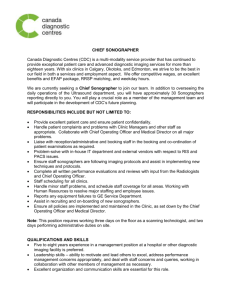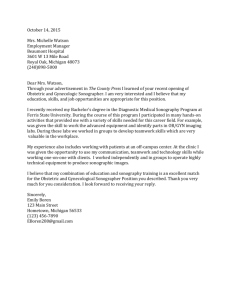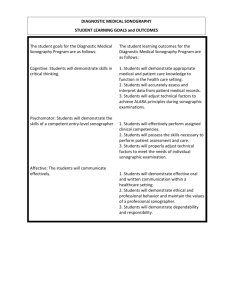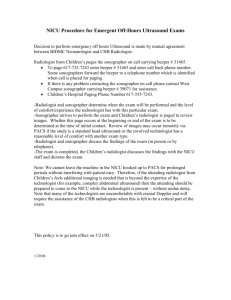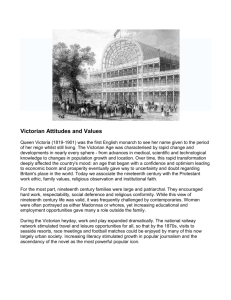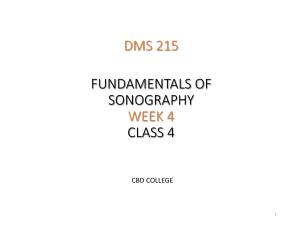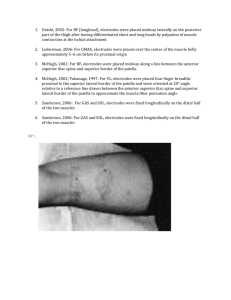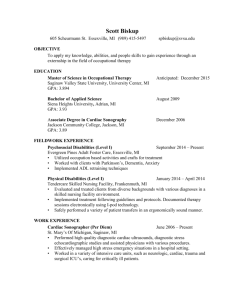Process for Adult Transthoracic Echocardiogram
advertisement
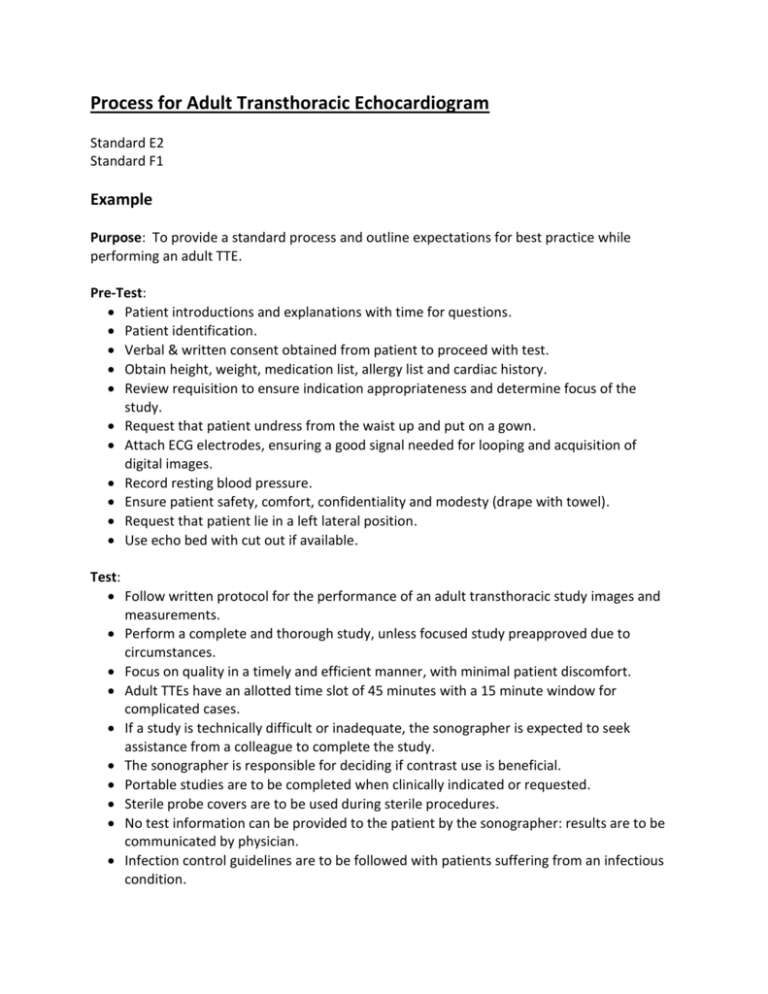
Process for Adult Transthoracic Echocardiogram Standard E2 Standard F1 Example Purpose: To provide a standard process and outline expectations for best practice while performing an adult TTE. Pre-Test: Patient introductions and explanations with time for questions. Patient identification. Verbal & written consent obtained from patient to proceed with test. Obtain height, weight, medication list, allergy list and cardiac history. Review requisition to ensure indication appropriateness and determine focus of the study. Request that patient undress from the waist up and put on a gown. Attach ECG electrodes, ensuring a good signal needed for looping and acquisition of digital images. Record resting blood pressure. Ensure patient safety, comfort, confidentiality and modesty (drape with towel). Request that patient lie in a left lateral position. Use echo bed with cut out if available. Test: Follow written protocol for the performance of an adult transthoracic study images and measurements. Perform a complete and thorough study, unless focused study preapproved due to circumstances. Focus on quality in a timely and efficient manner, with minimal patient discomfort. Adult TTEs have an allotted time slot of 45 minutes with a 15 minute window for complicated cases. If a study is technically difficult or inadequate, the sonographer is expected to seek assistance from a colleague to complete the study. The sonographer is responsible for deciding if contrast use is beneficial. Portable studies are to be completed when clinically indicated or requested. Sterile probe covers are to be used during sterile procedures. No test information can be provided to the patient by the sonographer: results are to be communicated by physician. Infection control guidelines are to be followed with patients suffering from an infectious condition. Post-Test: Remove electrodes and clean gel from patient. Stay with patient while they transition from the bed, assess stability. Ensure patient modesty and assist getting dressed as needed. Complete documentation of the preliminary report, and export to reading. Cardiologist: Ensure all fields are completed and information is accurate.
